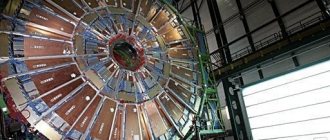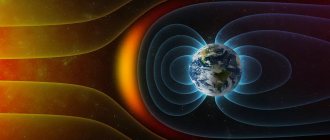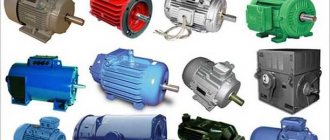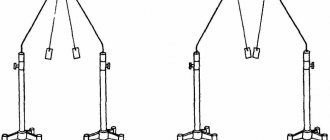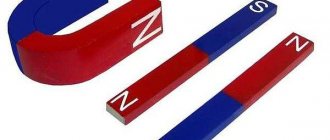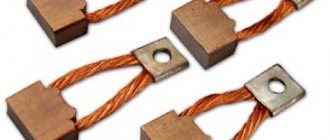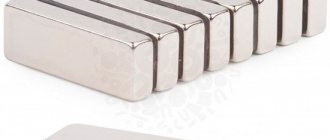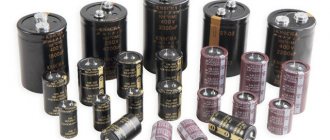In transport, at work and at home, we encounter different types of magnets. They are part of microphones, sensors, motors, etc. Magnets are divided into electric, permanent and temporary. Electromagnets are a metal core with a winding that creates a magnetic field when electric current is applied to it. Permanent magnets are materials that are capable of being magnetized for a long period of time. Temporary ones, in turn, retain magnetization for a certain period of time after exposure to a magnetic field.
Definition
What is a magnet? This is a material that has a certain degree of magnetization. This ability arises due to the fact that the molecules of a magnet have their own field and do not move chaotically, as in many other substances, but strictly in two directions. This mutual opposition has the properties of attraction and repulsion of metal objects. If you try to connect magnets with the same poles, you may feel rejection. Opposite sides, in turn, will attract each other. This has to do with the direction in which magnetic field waves move. It is worth noting that no piece of magnet can be unipolar. When it is broken, the molecules in each piece again form the north and south poles.
What else?
We humans are no exception. Thanks to the biocurrents flowing in the body, there is an invisible pattern of its power lines around us. Planet Earth is a huge magnet. And even more grandiose is the plasma ball of the sun. The dimensions of galaxies and nebulae, incomprehensible to the human mind, rarely allow the idea that all of these are also magnets.
Modern science requires the creation of new large and super-powerful magnets, the areas of application of which are related to thermonuclear fusion, generation of electrical energy, acceleration of charged particles in synchrotrons, and recovery of sunken ships. Creating a super-strong field using the magnetic properties of a magnet is one of the tasks of modern physics.
Types of magnets
What are magnets and what is their difference? The operation of many electrical appliances, sensors, and home appliances depends on the type of magnets that are present in them. Each has its own characteristics. They perform certain functions, depending on the scope of use. The main types include electromagnets, permanent and temporary magnets. It is worth considering each type in more detail.
What is a permanent magnet? This is a material that can maintain magnetization for a long time. Its molecules move in a constant direction and form a magnetic field in the absence of electric current. It is also called a natural magnet.
An example of a temporary magnet is paper clips, buttons, nails, a knife and other household items made of iron. Their strength lies in the fact that they are attracted to a permanent magnet, and when the magnetic field disappears, they lose their properties.
The field of an electromagnet can be controlled using electric current. How does this happen? A wire wound in turns on an iron core changes the strength of the magnetic field and its polarity when a current is supplied and changed.
Magnets and magnetic fields
2022. Mini-reference books.
• Modern types of permanent magnets, their parameters. • Application of tape recorders in medicine. • Determining the polarity of the magnet (using a compass). • Magnetization of water. • Maximum permissible magnetic field levels. • Electrical fuses • Replacement of electric meters (accuracy 2.5 to 2.0) • Table of electrical resistivities (in microohms, mini-reference book).
The natural magnetic field of the Earth, on its daytime surface, in the middle latitudes of the European part of Russia, has a total vector value of approximately 0.05 mT (induction, in millitesla) = 50 μT (microtesla) = 50 × 10-6 T (Tesla), which is old GHS units are 0.5 Gauss. The field strength, at fifty microteslas, is 40 A/m (amps per meter). Since the first millennium AD, the magnitude of the earth's geomagnetic field has decreased by more than half and the human body is experiencing deficiency syndromes (magnetic deficiency), which can be replenished thanks to magnetic therapy using external sources of the magnetic field.
Fig.1 Earth's magnetic field lines.
The force lines of the normal magnetic field of the planet are directed north and down (they enter the earth almost vertically, at an angle of the order of I = 70°, with a slight declination of ten degrees to the east; this is in the Moscow region, and in other areas of the country – geomagnetic field parameters may differ).
The approximate declination angle can be seen on the map. Accurate, current field parameters are determined using special computer programs. Specialized websites have online calculators and reference data. Links (remove spaces): https:// geomag.nrcan.gc.ca/calc/mfcal-en.php – calculator for calculating components (there, in the calculation results, a comma is the thousandths separator, i.e. the order of magnitude of horizontal and vertical components – thousands and tens of thousands of nanotesla). https:// www.ngdc.noaa.gov/geomag/data/poles/ pole_locations.txt – this web page contains historical information about the displacement of the planet’s magnetic poles, in the form of a list of coordinates, from 1590 to the present).
The main angular elements of the field: D (magnetic declination) – the angle of magnetic declination from the geographic meridian (to the east – positive values). I (magnetic inclination) – the angle of inclination of the total vector of the geomagnetic field, relative to the horizontal.
// Ratio of values: 0.05 mT (magnetic induction in SI units) = 0.5 Gauss (magnetic induction in SGS units - extra-systemic) = 0.5 Oersted (field strength in SGS units)
1 mT = 0.8 kA/m (kiloampere per meter) 1 T = 800 kA/m 1000 kA/m = 1.25 T (Tesla)
Table 1 Modern types of permanent magnets and their approximate characteristics (induction values on their pole surface, maximum operating temperatures, etc.): • Magnets with polymer filling, elastic magnetoretors used in medicine Br = up to 0.05 Tesla (50 millitesla = 500 Gauss).
• Magnetic plastics based on filler (for example, anisotropic NdFeB powder). They can be machined due to their plasticity (like rubber) and the ability to produce complex shapes using injection molding (including mounting holes and fastening means). They do not heat up when operating in alternating electromagnetic fields (insensitive to the effects of eddy currents). The maximum operating temperature is up to 120-220 degrees Celsius, depending on the heat resistance of the binder material. Br = 0.5 – 0.6 T (5000 – 6000 Gauss) (Nd-Fe-B).
• Ferrites (pressed ceramic ferrite-barium and ferrite-strontium, inexpensive black ferromagnets). Unlike “iron” magnets, they have a very high electrical resistance (therefore barium ferrite is used in circuits exposed to high-frequency fields), good mechanical strength, corrosion resistance, and lighter weight compared to iron ones - 1.5-2 times. It is possible to carry out multi-pole magnetization on a solid product. They have good resistance to external magnetic fields. In terms of cost, it is an order of magnitude cheaper than UNDC, while having higher coercive force values. Widely used in DC motors, generators, professional and home audio systems (increased induction - gained by gluing two rings). The disadvantages of ferromagnets are fragility and hardness (they can only be processed by grinding and using diamond cutting) and a decrease in coercive force when cooled below -20°C (which, in cold weather, reduces resistance to demagnetization by a magnetic field; in winter, at -60 degrees - magnetic properties are irreversibly lost and are not restored when returning to normal thermal conditions) or when heated (barium is especially sensitive). If the temperature changes faster than 5-10°C/min, cracks form on the ferrite, which worsens its physical properties. The maximum energy product is several times worse than that of SmCo. The temperature coefficient of residual magnetic induction is ten times worse, i.e. more than cast magnets. Br = 0.1 – 0.4 T (1000 – 4000 Gauss). Modern - from 0.2 to 0.43 T Tc of Br ~ -0.20% per °C (Temperature coefficient) Tmax/Tcur = 250-300 / 450 °C (Maximum operating temperature / Curie point) Hcb = 2-4 kOe (Coercive force according to induction, kilooersted) Range of maximum energy (energy product) - from 1.1 to 4.5 MGE On the website https://www.ferrite.ru/products/magnets/hardferrite - detailed comparative tables with products of foreign companies (Japan, France , Germany), indicating the full names and decoding of the code on the case.
• Thermally stable cast or sintered magnets "Alnico" (AlNiCo, Russian name - UNDC) based on iron-aluminum-nickel-copper-cobalt alloys. They are lighter than rare-earth samarium-cobalt ones, with approximately the same induction parameters, and are noticeably cheaper than them. They have high corrosion and radiation resistance. Used in acoustic systems and dynamic studio microphones (using Alnico V), in guitar pickups, in electric motors and electric generators, in instrument making (sensors, relays, etc.) Typical forms: plates, prisms, rings and tubes, disks and rods. Disadvantage - AlNiCo is brittle (processed by polishing, grinding, cutting with an abrasive wheel) and is easily demagnetized (low coercivity) under the influence of an external magnetic field, which makes the readings of the pointer instruments in which they are installed incorrect. Br = 0.7 – 1.3 T. Tc of Br ~ -0.02% per °C (this is a very good indicator) Tmax/Tcur = 250-550/800-850 °C Hc = 0.6 – 1.9 kOe Maximum energy range – from 1.4 to 7.5 MGse
• Heat-resistant deformable magnets type XK ( iron-chromium-cobalt, Fe-Cr-Co ). The strength and ductility of modern types of this alloy is an order of magnitude higher than the similar indicators of UNDK24 (Alnico 5) with comparable magnetic properties. They can be obtained in the form of cold-rolled sheets, hot-rolled and forged rods for subsequent mechanical and thermomagnetic processing. In recent years, new, promising nanostructured, hard magnetic FeCrCo alloys with improved characteristics have been developed. Maximum operating temperatures reach 450 °C Br = 1.1 – 1.5 T. Tc of Br = from -0.015 to -0.028% per °C (GOST 24897-81) Нсb – more than 0.5 kOe
• Sintered rare earth magnets based on samarium-cobalt alloys (SmCo, durable metal ceramics) . They have better corrosion resistance (that is, they do not rust, and therefore do not need a protective coating) compared to other rare-earth materials and higher values of maximum operating temperature (thermostable up to 350 ° C) and coercive force (that is, hard magnetic - resistant to demagnetization ). Compared to UNDC, the coercive force in terms of magnetization is an order of magnitude greater. Disadvantages: fragility and high price. They are used in spacecraft and mobile phones, in motorcycles and lawn mowers, in aviation and computer equipment, in medical equipment, in miniature electromechanical instruments and devices (wristwatches, headphones, etc.) They are used in modern instrument making. Br = 0.8 – 1.1 T. Tc of Br ~ -0.035% per °C Tmax/Tcur = from -60 to 250-500 / >700-800 °C Hcb = 8-10 kOe Maximum energy range – from 18 to 32 MG.Oe
• Neodymium – rare earth supermagnets based on neodymium-iron-boron alloys (Nd-Fe-B, NdFeB). Operating temperature range - from -60 to +150-220°C They are fragile and temperature sensitive (the limit of permissible heating depends on the brand of magnet). After severe overheating, magnetization is irreversibly and completely lost (it can be restored by reversing magnetization using a special installation). They have low corrosion resistance - they oxidize (rust) easily if the anti-corrosion coating (paint, varnish, thin metal film of nickel, copper or zinc) is damaged. In powder form, it can ignite and release toxic smoke. Flexible Nd-magnetic plastics (NdFeB) are more amenable to mechanical processing. Sintered neodymium magnets have the advantage of the greatest, compared to other types, the strength of residual magnetic induction and a very high energy product. The maximum operating temperature will be higher when cobalt is added instead of iron, but this leads to an increase in the cost of the material. They are widely used in computer technology (motors for electric drives of disks, devices for reading and writing information), in motors and sensors. Br = 1.0 – 1.4 T (10000 – 14000 Gauss). Tc of Br = -0.07 to -0.13% per °C Tmax/Tcur = 80(Nxx)-120(NxxH)-150(NxxS/U)-200(xxEH)-220 / 310-330 Hc = 12 kOe Range Max. energy – from 1 to 50 MGE
• Superconducting magnets , classified as super-powerful, can have maximum inductance values. Br > 5 Tesla
// To enhance (concentrate the lines of force) the magnetic field, use pole pieces in the form of tapering cones, which significantly increases the induction in a small volume.
Fig. 2 Shapes and sizes - from refrigerator magnets to supermagnets
“Iron cobalt” magnets are more resistant to mechanical stress, demagnetization (their coercivity) and high temperatures than ceramic and neodymium magnets.
From several magnets, connecting them in series (opposite poles) you can assemble magnetic batteries. The result is an increase in power and more extended and linear (at a sufficient distance) field lines.
Main characteristics of permanent magnets:
Residual magnetic induction (Br, Tesla or Gauss, G) is the magnetization remaining after magnetization of the material from which a permanent magnet is made, measured on its surface, in a closed system. Unit of measurement – Tesla, in the SI system or Gauss, in the sys. GHS. This is the main characteristic of a magnet. Sometimes this quantity is called “magnetic strength”.
Magnetic induction, B / Br (Tesla or Gauss, G) is the result of an instrumental measurement (Gaussmeter / Teslameter or magnetometer) of the real, actual field of a magnet at some distance from it or on its surface.
Coercive force by induction, Hcb (kA/m) – the magnitude of the external magnetic field required to completely demagnetize a magnet magnetized to the saturation state. Characterizes resistance to demagnetization (GOST 19693).
Maximum energy product, (BH)maxMGsE (MGaussOersted, in the SGS system) – magnet power.
Temperature coefficient of residual magnetic induction, Tc of Br (TKBr) (% per °C) – characterizes the change in magnetic induction from temperature.
Maximum operating temperature, Tmax (degrees Celsius) – the temperature limit at which a magnet temporarily loses part of its magnetic properties. Upon subsequent cooling, all magnetic properties are restored (unlike the Curie point). Exceeding the heating by several tens of degrees more than Tmax can cause partial demagnetization of the magnet (after cooling, the remaining attractive force will be less than the initial one; at the same time, precise measuring instruments, etc., are no longer suitable for work).
Curie point, Tcur (°C) – the temperature above which the magnetization of ferromagnets disappears. Nickel – +358 °C Iron – +769 °C. Cobalt – +1121 °C
MPASA
The compass points to the geographic north (where the magnetic South is located, see Figure 1) and shows the north pole of its needle. Taking into account the fact that opposite poles attract, the polarity of the magnet can be determined. The color markings of magnets may differ or be absent, so duplicate standard polarity symbols are used - N (North) and S (South), W (West) and E (East) for orientation to the cardinal directions and working with topographic map. If you have a magnet with a precisely known induction value, then you can approximately, with low accuracy, measure the strength of other magnets by making relative measurements (by the angle of deflection of the compass needle at a certain distance from the test sample).
Fig.4 Determining the polarity of a magnet using a compass
Application of magnets in medicine
Magnetotherapy (therapeutic use of constant, pulsed and alternating magnetic fields) is used in medicine for the prevention and treatment of many diseases. The induction (at the surface of the pole) of magnets used for medicinal purposes (permanent ceramic tape recorders or inductors - electromagnets) is, as a standard, about 25-40 millitesla (corresponding to 250-400 Gauss) for constant, up to 50 mT for pulsating and 1-5 mT (at the geometric center of the cylindrical inductor-solenoid) for an alternating magnetic field. The duration of exposure is usually 10-20 minutes. Procedures are carried out 4-6 times a week in the amount of 15-20 per course of treatment.
// for use by citizens at home, without medical supervision, the level of magnetic fields officially permitted by the Ministry of Health of the Russian Federation is up to 30 millitesla (mT).
Magnetic applicator, with a constant field induction of 10 millitesla (100 Gauss) - applied for 8-10 hours a day. It is attached with a patch to biologically active points (BAP), worn in the form of a pendant or clips, and also on a belt. For magnetopuncture (acupressure, acupressure using a magnetic applicator with an induction of up to 50 mT), needle or spherical attachments are used on a magnet, acting on bio-points for 20-30 seconds (by pressing 5-7 times on each BAP, sequentially changing the polarity). The poles of magnets act differently depending on the polarity and time of day. The south pole of the magnet has a calming effect, the north pole has a tonic effect.
// if you don’t have a standard magnetic applicator at hand for acupressure, it can be replaced by any piece of metal suitable in shape and size, if its magnetization does not exceed 30 mT (this, as well as the polarity, can be easily found out using an ordinary hiking or tourist compass (see Figure 4) - if there is an excess of thirty, by induction, then its needle will begin to react, deviate from a distance further than 15 centimeters).
The total induction of all constant field magnetic inductors installed for the patient should not exceed 50 millitesla (the approximate strength of the magnets from both headphones of a conventional player), during a fifteen-minute continuous procedure. Pulsed sources – up to 500-1400 mT in hundredths of a second.
Indications for magnetic therapy: atherosclerosis, diseases of the nervous system, hypertension, heart pain and palpitations, peptic ulcer of the stomach and duodenum, edema, skin diseases, neuroses, etc. Magnetic therapy improves the rheological properties of blood: its fluidity increases.
CONTRAINDICATIONS to the use of magnets: early post-infarction period, severe hypotension, tendency to bleeding, systemic blood diseases, pregnancy, severe coronary heart disease, stroke, malignant neoplasms, postoperative period (if there is a risk of bleeding), the presence of metal implants, acute infectious diseases and febrile diseases conditions of unknown etiology, individual intolerance. Products with magnets should not be used by people with a pacemaker or other electronic devices in the body and by children under two years of age.
From news feeds it became known that the US military is testing an electromagnetic gun (emitter), which causes epileptic attacks in people and turns them into “vegetables”. This type of weapon will enter service with the US Army.
Magnetization of water
During magnetic (at large gradients, in a constant, alternating or pulsating magnetic field; electromagnets and solenoids can be used for this) activation of liquids, including water, during their turbulent movement (which is equivalent to the action of an alternating magnetic field), in As a result of processing, the clusters are ground (this is easier to do at sufficiently high temperatures of the working substance). Magnetized liquids acquire increased fluidity, a more uniform structure and high dissolving ability.
// Turbulence - vortex flows (vortexes, Vortex), deforming water associates / clusters of different sizes (especially massive ones).
// There are ancient ways to “revive” water. For example, in the Japanese tradition of the tea ceremony, the drink is whipped and stirred with bamboo sticks, in the Chinese tea drinking culture it is poured from a great height (to “breathe” the water), etc.
Magnetized water (with a microcluster structure - finely structured, containing more H2O monomolecules) - is more easily absorbed by the body, improves the permeability of biological membranes of tissue cells, cleanses blood vessels, reduces excess cholesterol in the blood and liver, regulates blood pressure, normalizes metabolism, promotes the removal of stones from kidneys, therefore - is widely used in medicine (using physiotherapeutic devices), for the treatment and prevention of many diseases, as well as in agriculture - for watering plants (at the same time, with the dissolution and removal of salts into deep horizons - soils are improved, salt marshes are reclaimed) and soaking seeds. The beneficial, medicinal properties, after activation, are retained in the liquid - during the first hours (maybe longer, depending on the processing parameters: chemical composition, the presence of iron and chloride ions, charge of suspended particles, sufficient degassing, pH value and storage conditions - temperature, vibrations, interference from external electromagnetic radiation and background radiation levels).
For rapid magnetic activation of water, you need fairly powerful magnets with a strength of 100-200 mT (1000-2000 Gauss) and almost direct contact with water (for drinking water - through a thin, sealed partition), taking into account the rapid decrease in magnetic field induction with distance (by an order of magnitude – four to five centimeters from the pole surface of standard ceramic ring magnets). The optimal flow rate of running water during magnetization is 0.5-2 meters per second. The relative arrangement of the activator poles in a reversible (repel) two-magnetic system - NS SN or SN NS. The water flow passes through the ley lines of the magician. fields of different directions. The distance between the magnets (they are located inside the sealed case or outside - put on the mouth of the funnel, on a plastic watering can, or on a regular rubber / plastic hose) is five to ten centimeters. If you have many permanent ferromagnets available, you can assemble a multi-reverse circuit for watering a garden or water supply: N-SS-NN-SS-N... (the flow of water repeatedly crosses magnetic fields in different directions), stringing them onto a plastic pipe (which is preferable, since .as easier to assemble/modify, and more hygienic than cabinet models, which are more difficult to clean).
// The range of effective action of the magnetic field (100-200 mT) on the liquid is only the first centimeters from the surface of the magnet pole. At ten to fifteen centimeters, the induction is two orders of magnitude less than the maximum, which is not enough to magnetize water. A good example of devices for magnetic water treatment are models SO-2/3, produced back in Soviet times. Now, in stores, there are also good devices.
Magnetic activators used to combat scale and corrosion in thermal power equipment differently. Liquids, during their laminar movement, are treated with a constant magnetic field . In this case, polarization of the precession of nuclear (proton) and electron spins occurs (it takes little time for them to spin up sufficiently - about 2-3 seconds) and deformation of salt ions in the solution, with their subsequent crystallization. In water, after such magnetic treatment, the coagulation of impurities improves and their precipitation, the rate of crystallization of dissolved substances increases (not on the heating surface, but in the mass of water; salt crystals of smaller sizes are formed, but in larger quantities). The formed aggregate structures remain in a suspended finely dispersed state, in the form of flakes and loose sludge, and are then washed out by the flow of water into sludge traps. Small ferromagnetic particles become magnetized and stick to the walls of the pipe opposite the poles.
Modern industrial hydromagnetic systems (HMS) use powerful supermagnets based on samarium-cobalt or neodymium-iron-boron (neodymium) alloys, which makes it possible to effectively carry out processing at a fluid flow rate increased to 4.0 m/s in large cross-section pipelines. At the same time, the service life of the equipment is significantly increased and the consumption of reagents is reduced.
// for local removal of scale (boiler stone - lime deposits of calcium carbonate contained in “hard” water) and cleaning of other deposits on the walls of steam boilers - an acoustic, ultrasonic method of protection is effectively used.
Magnets with induction at the poles of 0.05-0.5 T (the optimal field strength in the working area is 0.1-0.2 T = 1000-2000 Gauss), located on magnetically permeable pipes (made of plastic or soft magnetic metal), to the pumping equipment (1 - 5 meters ) or more than 15 m after it. Installation - not necessarily in the form of an insert (in the version of flange inserts), there may also be external linings (electromagnetic systems). If there is scale (salt deposits) on the walls of heating pipes or radiators, then magnetized water dissolves and removes it. Water treated with a magnetic field can retain the anti-scale effect for quite a long time - up to a week (depending on storage conditions, especially temperature, level of initial general mineralization, intensity of mixing and chemical composition).
// since magnetization by a constant irreversible magnetic field, in a laminar flow or in stagnant water, crystallizes and precipitates some dissolved salts - such water can only be used for technical purposes.
APPLICATIONS
Maximum permissible levels (MPL) of a constant magnetic field (in time, during the working day), the impact of which does not cause diseases or deviations in health during work or in the long term of life of the present and subsequent generations. For conditions of general (whole body) and local (hands, forearm) exposure. Table according to SanPiN 2.2.4.1191-03 (2003) standards in production conditions.
| Exposure time per working day, minutes | Conditions for exposure to a constant magnetic field | |||
| general | local | |||
| Maximum voltage level, kA/m | Magnetic induction remote control, mT | Maximum voltage level, kA/m | Magnetic induction remote control, mT | |
| 0 – 10 | 24 | 30 | 40 | 50 |
| 11 – 60 | 16 | 20 | 24 | 30 |
| 61 – 480 | 8 | 10 | 12 | 15 |
// The level of constant magnetic field is assessed in units of magnetic field strength (N) in A/m (ampere, kiloampere per meter) or in units. magnetic induction (V) in mT (millitesl).
For an alternating / periodic magnetic field (PMF) with a frequency of 50 Hz, the standards are stricter:
Residence time (hour) and Permissible MP levels, N [A/m] / V [µT] for general local exposure 1 1600 / 2000 6400 / 8000 2 800 / 1000 3200 / 4000 4 400 / 500 1600 / 2000 8 80 / 100 800 / 1000
// 1000 µT = 1 mT
If it is necessary for personnel to stay in areas with different intensity (induction) of the PMP, the total time for performing work in these areas should not exceed the maximum permissible for the area with maximum intensity.
Help this site
[ to Home Page ]
Place an ad
Design (full package of documentation, drawings, calculations), installation of heat and power equipment in buildings and structures. buy corrugated lentil sheet | chandeliers
Fridge magnets - souvenirs. Varieties of modern permanent magnets and industrial electromagnets.
Copyright © 2007-2022, KAKRAS.RU
Types of permanent magnets
Ferrite magnets are the most famous and actively used in everyday life. This black material can be used as fasteners for various items, such as posters, wall boards used in the office or school. They do not lose their attractive properties at temperatures not lower than 250°C.
Alnico is a magnet consisting of an alloy of aluminum, nickel and cobalt. This gave it its name. Very resistant to high temperatures and can be used at 550°C. The material is lightweight, but completely loses its properties when exposed to a stronger magnetic field. Mainly used in the scientific industry.
Samarium magnetic alloys are high performance materials. The reliability of its properties allows the material to be used in military developments. It is resistant to aggressive environments, high temperatures, oxidation and corrosion.
What is a neodymium magnet? It is the most popular alloy of iron, boron and neodymium. It is also called a supermagnet, as it has a powerful magnetic field with high coercive force. By observing certain conditions during operation, a neodymium magnet can retain its properties for 100 years.
We found out what a magnet is. Next, we will consider the use of the most popular and popular alloys.
Let's clarify the concepts
A magnetic field is a force acting on charged bodies that are in motion. It “does not work” with stationary objects (or those without a charge) and serves as one of the forms of the electromagnetic field, which exists as a more general concept.
If bodies can create a magnetic field around themselves and themselves experience the force of its influence, they are called magnets. That is, these objects are magnetized (have the corresponding moment).
Different materials react differently to external fields. Those that weaken its effect internally are called paramagnets, and those that strengthen it are called diamagnetics. Certain materials have the property of amplifying their external magnetic field a thousandfold. These are ferromagnets (cobalt, nickel with iron, gadolinium, as well as compounds and alloys of the mentioned metals). Those of them that, when exposed to a strong external field, themselves acquire magnetic properties are called hard magnetic. Others, capable of behaving like magnets only under the direct influence of the field and ceasing to be such when it disappears, are soft magnetic.
Use of neodymium magnets
It is worth taking a closer look at what a neodymium magnet is? This is a material that is capable of recording the consumption of water, electricity and gas in meters, and not only. This type of magnet belongs to permanent and rare earth materials. It is resistant to the magnetic fields of other alloys and is not subject to demagnetization.
Neodymium products are used in the medical and industrial industries. Also in domestic conditions they are used for attaching curtains, decorative elements, and souvenirs. They are used in search instruments and electronics.
To extend their service life, magnets of this type are coated with zinc or nickel. In the first case, spraying is more reliable, as it is resistant to aggressive agents and can withstand temperatures above 100°C. The strength of a magnet depends on its shape, size and the amount of neodymium included in the alloy.
Effect of temperature on magnetic properties
Neodymium magnets “love” the cold, and their effectiveness does not weaken even at -130°C. Manufacturers must indicate the maximum operating temperature in the product characteristics. This is the temperature above which a magnetic material begins to lose its magnetism, either temporarily or permanently.
All N (Normal) brands usually operate at temperatures up to +80°C and lose, as a rule, 0.11% of energy when the temperature is exceeded by 1°C. Small losses will be recovered by cooling, but frequent heating and cooling cycles will degrade magnetic performance. Additionally, a rapid transition from cold to warm can cause the magnet to break or crack.
Applications of Ferrite Magnets
Ferrites are considered the most popular permanent magnets. Thanks to strontium included in the composition, the material does not corrode. So what is a ferrite magnet? Where is it used? This alloy is quite fragile. That's why it is also called ceramic. Ferrite magnets are used in automotive and industrial applications. It is used in various equipment and electrical appliances, as well as household installations, generators, and acoustic systems. In automobile manufacturing, magnets are used in cooling systems, window lifters, and fans.
The purpose of ferrite is to protect equipment from external interference and prevent damage to the signal received via the cable. Thanks to this property, magnets are used in the production of navigators, monitors, printers and other equipment where it is important to obtain a clean signal or image.
A little bit of history
People have been studying the properties of permanent magnets since very, very ancient times. They are mentioned in the works of scientists of Ancient Greece as far back as 600 years BC. Natural (naturally occurring) magnets can be found in magnetic ore deposits. The most famous of the large natural magnets is kept at the University of Tartu. It weighs 13 kilograms, and the load that can be lifted with its help is 40 kg.
Humanity has learned to create artificial magnets using various ferromagnets. The value of powdered ones (made of cobalt, iron, etc.) lies in the ability to hold a load weighing 5000 times its own weight. Artificial specimens can be permanent (obtained from hard magnetic materials) or electromagnets having a core made of soft magnetic iron. The voltage field in them arises due to the passage of electric current through the wires of the winding, which surrounds the core.
The first serious book containing attempts to scientifically study the properties of a magnet is the work of the London physician Gilbert, published in 1600. This work contains the entire set of information available at that time regarding magnetism and electricity, as well as the author’s experiments.
Man tries to adapt any of the existing phenomena to practical life. Of course, the magnet was no exception.
Magnetotherapy
Physiotherapy with a magnet is often used. What it is? This procedure is called magnetic therapy and is carried out for therapeutic purposes. The effect of this method is to influence the patient's body using magnetic fields under low-frequency alternating or direct current. This treatment method helps get rid of many diseases, relieve pain, strengthen the immune system, and improve blood flow.
It is believed that diseases are caused by disturbances in the human magnetic field. Thanks to physiotherapy, the body returns to normal and the general condition improves.
From this article you learned what a magnet is, and also studied its properties and applications.
Main areas
The areas where the properties of magnets have found their main application are radio and electrical engineering, instrument making, automation and telemechanics. Relays, magnetic circuits, etc. are made from ferromagnetic materials. In 1820, the property of a current-carrying conductor was discovered to influence the needle of a magnet, forcing it to turn. At the same time, another discovery was made - a pair of parallel conductors through which current passes in the same direction have the property of mutual attraction.
Thanks to this, an assumption was made about the reason for the properties of the magnet. All such phenomena arise in connection with currents, including those circulating inside magnetic materials. Modern ideas in science completely coincide with this assumption.
Medical field
The field of diagnostics and medical therapy was no exception. Thanks to electron linear accelerators generating X-rays, tumor therapy is carried out; proton beams are generated in cyclotrons or synchrotrons, which have advantages over X-rays in local directionality and increased efficiency in the treatment of eye and brain tumors.
As for biological science, even before the middle of the last century, the vital functions of the body were in no way connected with the existence of magnetic fields. The scientific literature was occasionally replenished with isolated reports of one or another of their medical effects. But since the sixties, publications on the biological properties of magnets have flowed in an avalanche.
Science does not stand still
Scientists continue to experiment with magnetic fields. Experiments are carried out both on animals and birds, and on bacteria. Conditions of a weakened magnetic field reduce the success of metabolic processes in experimental birds and mice; bacteria abruptly stop reproducing. With prolonged field deficiency, living tissues undergo irreversible changes.
It is to combat all such phenomena and the numerous negative consequences caused by them that magnetic therapy as such is used. It seems that at present all the useful properties of magnets have not yet been adequately studied. Doctors have many interesting discoveries and new developments ahead of them.
About engines and generators
Based on it, many varieties of electric motors and electric generators have been created, that is, rotary-type machines, the operating principle of which is based on the conversion of mechanical energy into electrical energy (we are talking about generators) or electrical energy into mechanical energy (we are talking about engines). Any generator operates on the principle of electromagnetic induction, that is, EMF (electromotive force) occurs in a wire that moves in a magnetic field. An electric motor operates based on the phenomenon of force arising in a current-carrying wire placed in a transverse field.
Using the force of interaction of the field with the current that passes through the winding turns of their moving parts, devices called magnetoelectric operate. An induction electricity meter acts as a new powerful AC electric motor with two windings. A conductive disk located between the windings is subject to rotation by a torque whose force is proportional to the power consumption.
Where is a magnet used in modern life?
Magnets are used in many areas: from engineering to household. It is part of the familiar things that people see every day:
- bank cards with magnetic stripe;
- microphones, sound amplifiers;
- generators, electric motors in cars;
- compasses;
- transformers, polarized relays;
- televisions and monitors with cathode ray tubes;
- Kids toys;
- contactless braking system in new generation cars.
It is quite difficult to list all the areas of use and devices made with the participation of a magnet. It is obvious that this fundamental discovery has given society great opportunities for development.
Science and Communication
Thanks to the magnetic properties of substances, science has the opportunity to study the structure of a wide variety of bodies. We can only mention magnetochemistry or magnetic flaw detection (a method for detecting defects by studying the distortion of the magnetic field in certain areas of products).
They are also used in the production of ultra-high frequency range equipment, radio communication systems (for military purposes and on commercial lines), for heat treatment, both at home and in the food industry (everyone is familiar with microwave ovens). It is almost impossible, within the framework of one article, to list all those highly complex technical devices and areas of application where the magnetic properties of substances are used today.
What about in everyday life?
Electric wristwatches equipped with a miniature battery are familiar to everyone. Thanks to the use of a pair of magnets, a pair of inductors and a transistor, their design is much simpler in terms of the number of parts available than that of a mechanical watch.
Electromagnetic type locks or cylinder locks equipped with magnetic elements are increasingly used. Both the key and the lock are equipped with a combination dial. When the correct key is inserted into the lock hole, the internal elements of the magnetic lock are attracted to the desired position, allowing it to be opened.
The action of magnets is the basis for the design of dynamometers and galvanometers (a highly sensitive device with which weak currents are measured). The properties of magnets are used in the production of abrasives. This is the name given to sharp, small and very hard particles that are needed for mechanical processing (grinding, polishing, scraping) of a wide variety of objects and materials. During their production, the ferrosilicon required as part of the mixture partially settles to the bottom of the furnaces, and is partially introduced into the composition of the abrasive. Magnets are required to remove it from there.
Magnetic products
In stores you can find many products made from magnets. The following products are considered the most popular:
- Toys. This is darts, board entertainment. Magnetism makes games much more interesting.
- Fastenings, holders. With the help of hooks and panels you can perfectly organize your space. Magnetic force is needed not only at home, but also in workshops and stores.
- Office magnets. For events, magnetic boards are used to display information. They are also needed in schools and educational institutions.
Magnetic products are varied. They are in demand in everyday life, as they make life much easier.
From all ailments...
Evidence of the effectiveness of this effect was published in 1530 by the famous Swiss doctor Paracelsus. In his writings, the doctor described the magical properties of a magnet that can stimulate the body’s powers and cause self-healing. A huge number of diseases in those days began to be overcome using a magnet.
Self-medication with this remedy became widespread in the United States in the post-war years (1861-1865), when there was a categorical shortage of medicines. It was used both as a medicine and as a pain reliever.
Since the 20th century, the healing properties of magnets have received scientific substantiation. In 1976, the Japanese doctor Nikagawa introduced the concept of magnetic field deficiency syndrome. Research has established its exact symptoms. They consist of weakness, fatigue, decreased performance and sleep disturbances. There are also migraines, joint and spinal pain, problems with the digestive and cardiovascular systems in the form of hypotension or hypertension. The syndrome concerns both the field of gynecology and skin changes. The use of magnetic therapy can quite successfully normalize these conditions.
Before and now
However, attempts to treat people with it were made by alchemists back in the 16th century. There have been many successful attempts to cure toothache, nervous disorders, insomnia and many problems with internal organs. It seems that the magnet found its use in medicine no later than in navigation.
Over the last half century, magnetic bracelets have been widely used, popular among patients with impaired blood pressure. Scientists seriously believed in the ability of a magnet to increase the resistance of the human body. Using electromagnetic devices, they learned to measure the speed of blood flow, take samples or administer the necessary medications from capsules.
A magnet is used to remove small metal particles that get into the eye. The work of electrical sensors is based on its action (any of us is familiar with the procedure for taking an electrocardiogram). Nowadays, the collaboration of physicists with biologists to study the deep mechanisms of the influence of the magnetic field on the human body is becoming increasingly closer and necessary.
